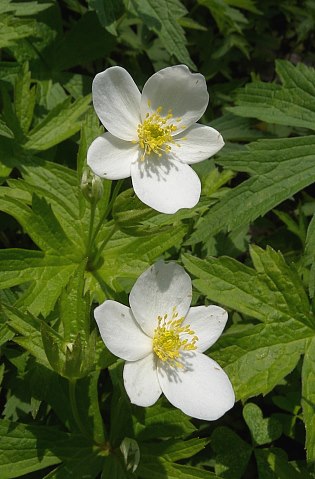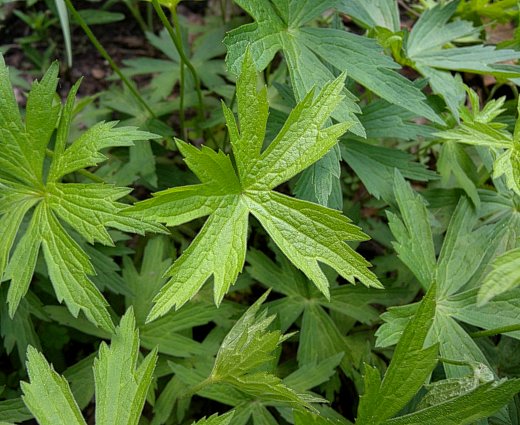
The blooming period occurs from late spring to mid-summer for about 1-1½ months. Afterwards, each flower is replaced by a cluster of achenes. The achenes have bodies about 4-6 mm. long and a little less across, while their beaks are 2-6 mm. long; they are also flattened and slightly hairy. The root system is rhizomatous. Vegetative colonies of plants are often produced.
Cultivation: The preference is full or partial sun, moist conditions, and calcareous soil containing loam or gravelly material.
Range & Habitat: The native Meadow Anemone is occasional in northern and central Illinois, while in the southern section of the state it is rare or absent (see Distribution Map). Habitats include moist prairies, sedge meadows, openings in floodplain woodlands, woodland borders, banks of streams, and swampy areas. These habitats can be either sandy or non-sandy. Because of its attractive flowers and foliage, Meadow Anemone is cultivated occasionally in gardens.

Faunal Associations: Floral visitors include small bees (Andrenid, Halictid) that collect pollen and Syrphid flies that feed on pollen. The larvae of a fly, Dasineura anemone, form bud galls on Meadow Anemone. Another insect, Rhizoecus falcifer (Ground Mealybug), feeds on the roots. Because the foliage contains blistering agents that can irritate the gastrointestinal tract, mammalian herbivores usually avoid consumption of this plant.
Photographic Location: The Toledo Botanical Garden in Toledo, Ohio.
Comments: Meadow Anemone is similar in appearance to Thimbleweed (Anemone virginiana) and Candle Anemone (Anemone cylindrica), except that it has larger flowers, sessile opposite leaves, and achenes that are only sparsely hairy, instead of being embedded in a cottony mass of hairs. In addition to these three species, other native species of this genus in Illinois are smaller plants that bloom earlier in the year. Another common name of Anemone canadensis is Canada Anemone.